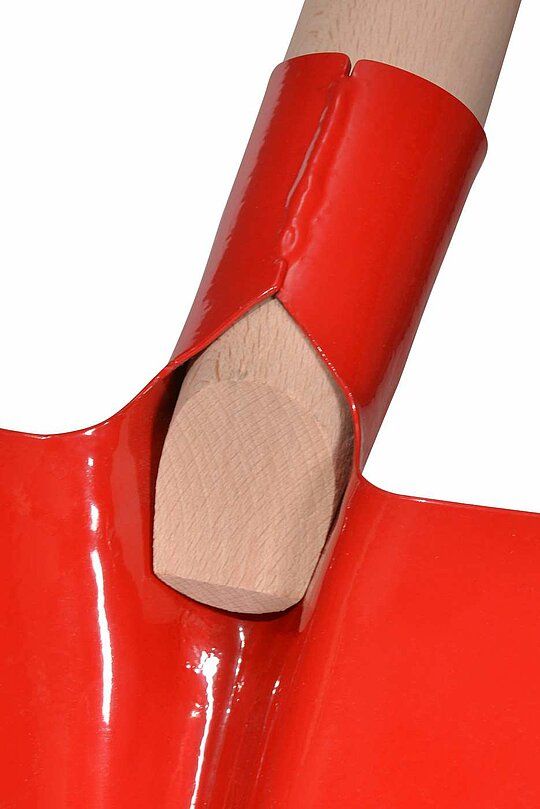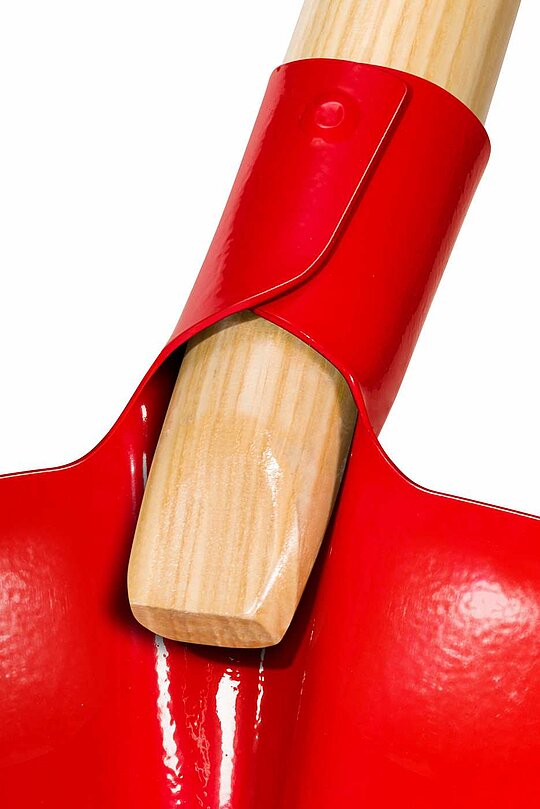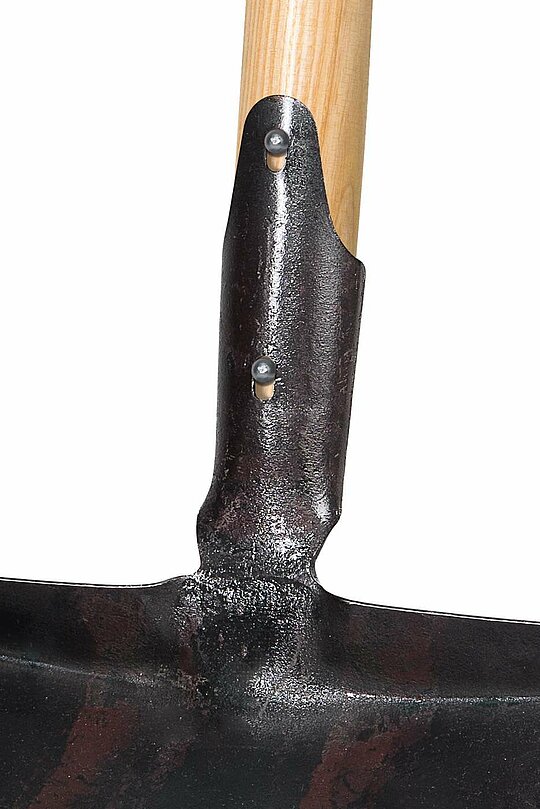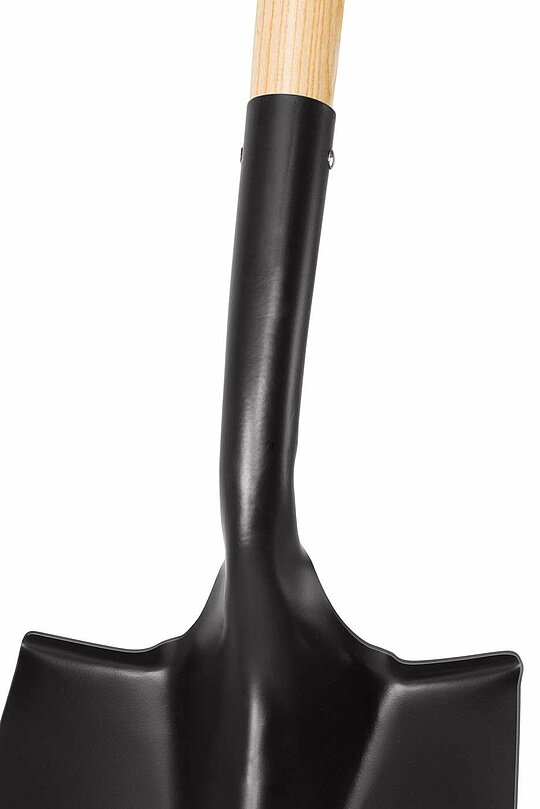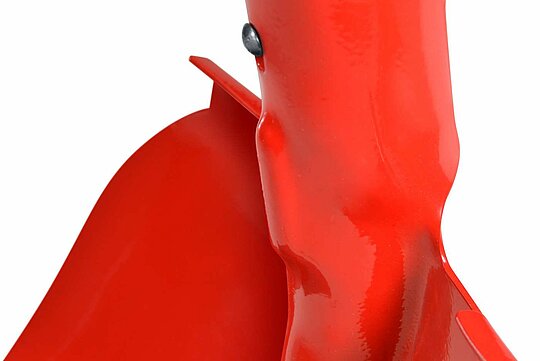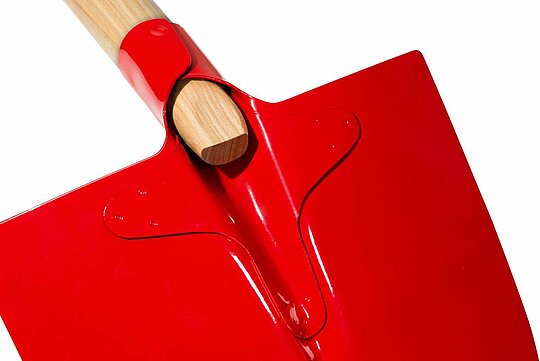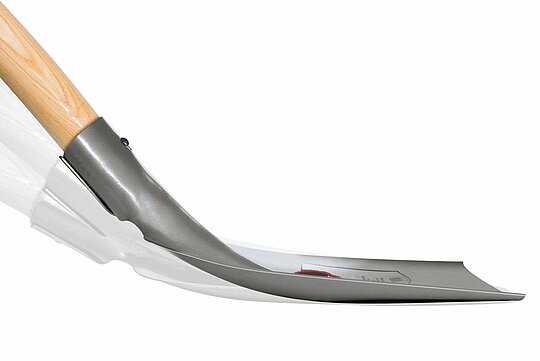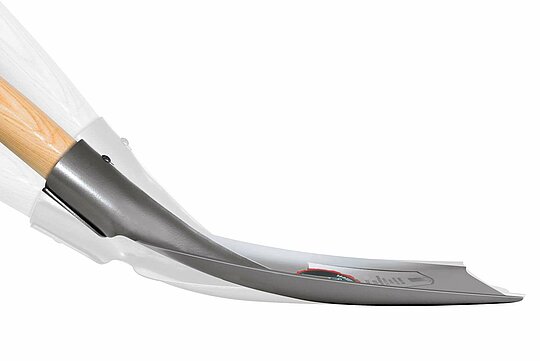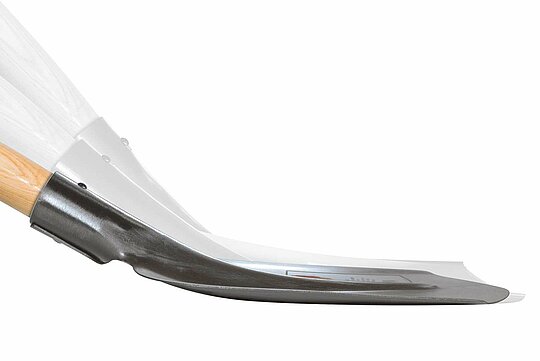An important element in a shovel is the shaft attachment - the so-called socket, which is sometimes also called a grommet.
There are several types of socket, which differ e.g. in shape, size and processing and have an influence on the stability of the shovel.
For some tasks, a high resilience is very important - for others, the low weight of the tool is crucial. It is important to find the best compromise - the more resilient an element is, the heavier it will be.
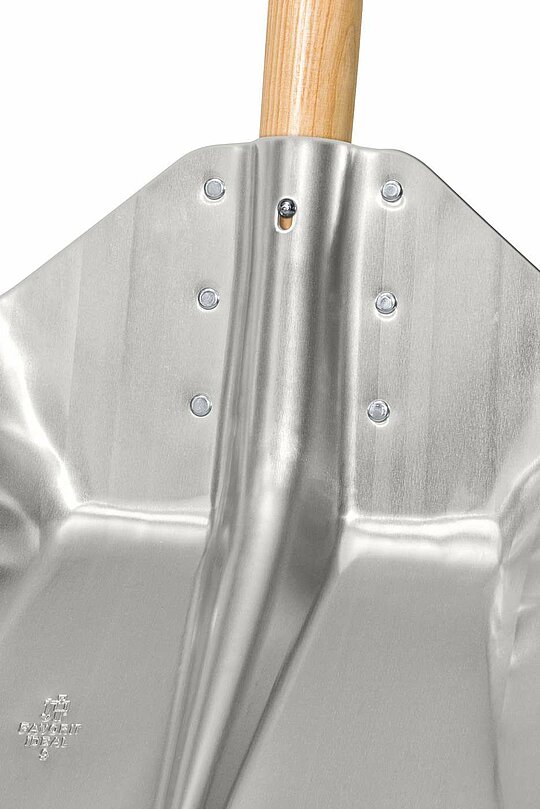
Socket 6-fold riveted
- is only available for light metal blades
- blade consists of 2 parts and is riveted 6 times
- socket encloses the shaft
- shaft is fixed with a nail
- slotted hole for easy readjustment in case of wood shrinkage
Features:
- high resilience
- relatively high stability
- very light weight
- easy shaft exchange
Socket reinforcement
The highest stress in a shovel is at the connection between the shovel blade and the socket ( shaft attachment).
To increase the resilience of a shovel, the whole shovel blade can be made of thicker material. However, this would significantly increase the total weight of the shovel.
Therefore, the blade is partially reinforced or bent to achieve greater stability.











